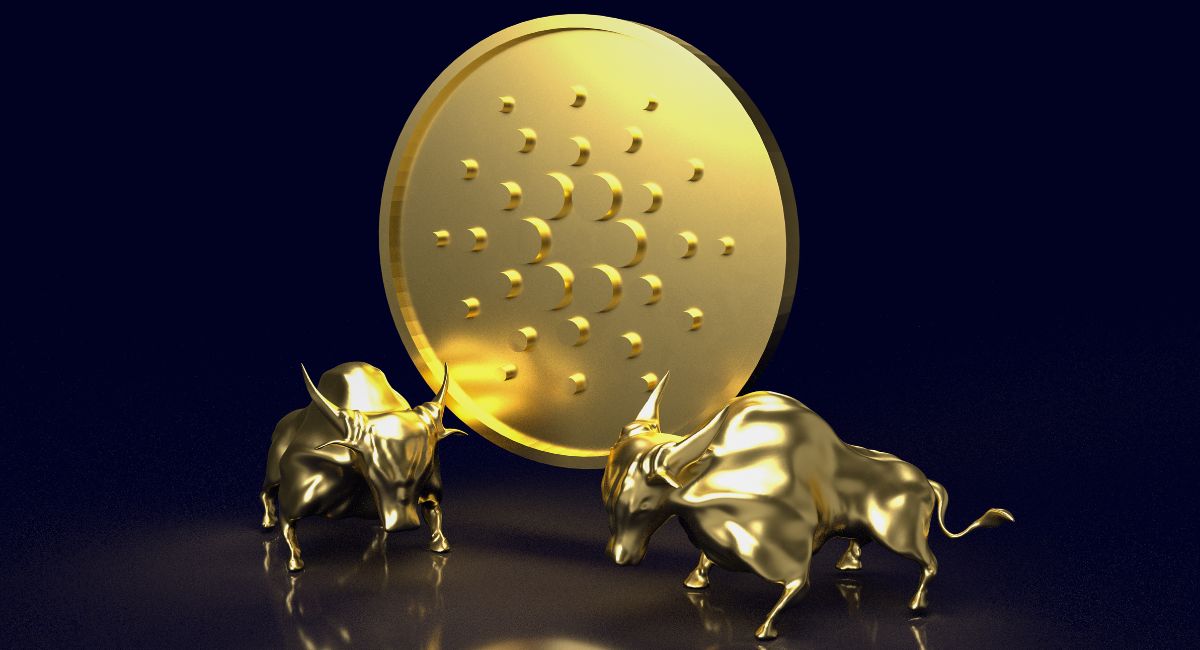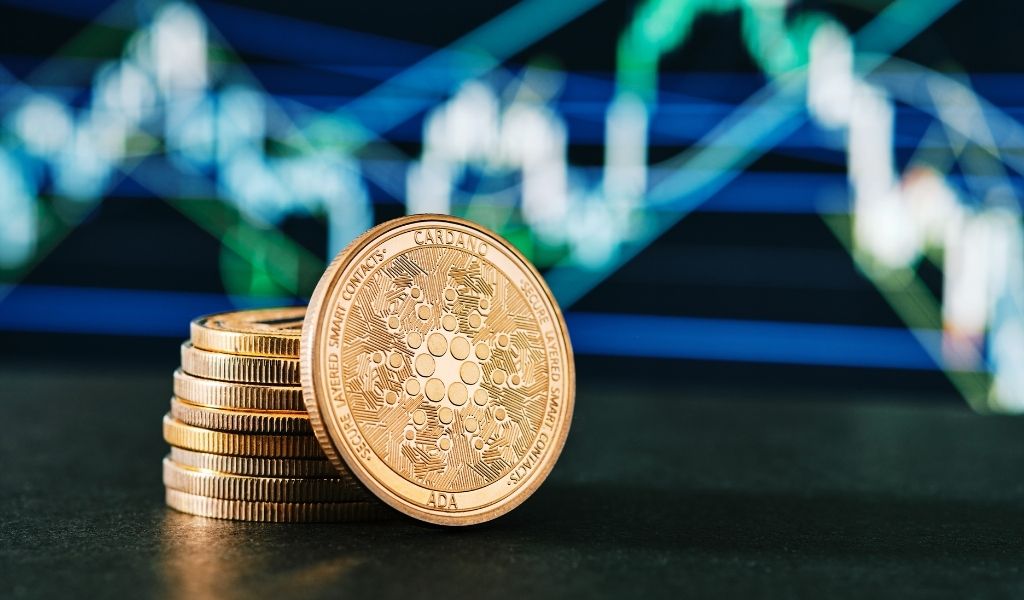Cardano’s Move To Proof-of-Stake: A Game-Changer For Energy Efficiency And Scalability
Cardano, one of the leading blockchain platforms, recently made a significant shift from the traditional proof-of-work (PoW) consensus mechanism to proof-of-stake (PoS). This transition marks a major positive development for Cardano, as it brings improved energy efficiency, scalability, and environmental sustainability to the network. In this article, we explore Cardano’s move to PoS and its impact on the project’s growth and increasing interest.
Understanding Cardano’s move to Proof-of-Stake (PoS)
- Understanding Proof-of-Stake (PoS) and Proof-of-Work (PoW): To appreciate the significance of Cardano’s transition, it is essential to understand the difference between PoS and PoW. PoW, used by networks like Bitcoin, requires substantial computational power and energy consumption to solve complex mathematical puzzles to validate transactions. PoS, on the other hand, relies on a different mechanism where participants “stake” their cryptocurrency holdings to secure the network and validate transactions.
- Energy Efficiency: One of the primary advantages of PoS is its superior energy efficiency compared to PoW. PoW mechanisms, due to the computational requirements, consume massive amounts of energy. In contrast, PoS consumes significantly less energy as it doesn’t rely on energy-intensive mining operations. Cardano’s move to PoS reduces its environmental impact and aligns with the growing global concern for sustainable blockchain technologies.
- Scalability and Transaction Speed: PoS is known for its scalability potential, addressing one of the major challenges faced by many blockchain platforms. With PoS, Cardano can handle a significantly higher number of transactions per second, allowing for improved scalability and a smoother user experience. The transition to PoS enables Cardano to better accommodate future growth and increased demand, positioning it as a competitive player in the blockchain ecosystem.
- Security and Decentralization: Contrary to common misconceptions, PoS maintains a high level of network security. In a PoS system like Cardano, participants who hold a larger stake have a higher probability of being selected to validate transactions and secure the network. This incentivizes stakeholders to act in the best interest of the platform and discourages malicious activities. Furthermore, PoS enhances decentralization by reducing the concentration of power in the hands of a few mining entities, promoting a more distributed and resilient network.
- Economic Incentives for Participants: Cardano’s PoS implementation introduces economic incentives for participants who hold and stake their ADA (the native cryptocurrency of Cardano) to secure the network. Validators, also known as stake pool operators, have the opportunity to earn rewards based on the amount of ADA they hold and stake. This incentivizes active participation and ensures a robust network where stakeholders have a vested interest in the success and security of the platform.
- Increased Interest and Adoption: Cardano’s transition to PoS has garnered significant attention and interest from the blockchain community and investors. The move demonstrates Cardano’s commitment to innovation and sustainability, positioning it as a leading platform for future blockchain solutions. This increased interest has resulted in a surge in ADA’s value and heightened engagement with the Cardano ecosystem, attracting developers, businesses, and individuals seeking a more energy-efficient and scalable blockchain platform.
- Ongoing Development and Upgrades: Cardano’s transition to PoS is not a one-time event but an ongoing process. The platform continues to undergo improvements and upgrades to enhance its functionality, security, and usability. Cardano’s development team, IOHK (Input Output Hong Kong), regularly releases updates and new features, ensuring that the network remains at the forefront of technological advancements and meets the evolving needs of its users.
Also, read – How Peer To Peer Makes Cardano Blockchain Special
The Rapid Growth of the Cardano Ecosystem
The Cardano ecosystem has experienced rapid growth, attracting developers, entrepreneurs, and enthusiasts who recognize the platform’s potential for innovation, scalability, and sustainability. This article explores the flourishing Cardano ecosystem, highlighting the emergence of new projects, particularly in the domains of decentralized finance (DeFi), decentralized exchanges (DEXs), and non-fungible tokens (NFTs).
BREAKING: #SNEK has continued its unprecedented growth in the #Cardano ecosystem surpassing a holder count of over 10,000 unique holders as well as achieving a market cap of over 70M $ADA.
What are your thoughts on $SNEK and its extraordinary growth? pic.twitter.com/kT3GBWcuMu
— The Cardano Times (@TheCardanoTimes) May 21, 2023
- Decentralized Finance (DeFi) on Cardano: DeFi has gained immense popularity within the blockchain space, and Cardano is no exception to this trend. The growth of the Cardano ecosystem has been fueled by the emergence of DeFi applications that leverage the platform’s secure and scalable infrastructure. Projects like CardStarter, Liqwid Finance, and Occam.fi are bringing decentralized lending, yield farming, and liquidity provision to Cardano, providing users with innovative financial solutions while maintaining the security and transparency inherent in blockchain technology.
- Decentralized Exchanges (DEXs) on Cardano: DEXs play a pivotal role in enabling peer-to-peer trading and enhancing liquidity within blockchain ecosystems. Cardano has witnessed the development of decentralized exchanges that facilitate secure and efficient trading of digital assets. Projects like SundaeSwap and Minswap are aiming to provide users with decentralized exchange capabilities on the Cardano network, allowing them to swap tokens without relying on centralized intermediaries. These DEXs promote self-custody of assets, reduce trading fees, and contribute to the overall liquidity of the Cardano ecosystem.
- Non-Fungible Tokens (NFTs) on Cardano: NFTs have revolutionized the digital art and collectibles market, and Cardano has emerged as a promising platform for NFT development. Artists, creators, and collectors are flocking to Cardano to explore the possibilities of minting, trading, and showcasing NFTs in a secure and sustainable environment. Projects such as CardanoKidz, SpaceBudz, and CardanoBits are paving the way for the Cardano NFT ecosystem, offering unique digital assets and fostering a vibrant community of artists and enthusiasts.
- Support for Interoperability and Cross-Chain Solutions: The growth of the Cardano ecosystem is not limited to its native applications. Cardano aims to establish interoperability and seamless connectivity with other blockchain networks. Initiatives like the Cardano-Chainlink integration and the development of cross-chain bridges allow users to leverage the strengths of multiple blockchain platforms, expanding the possibilities for collaboration, liquidity, and functionality.
- Developer-Friendly Environment: Cardano’s growth can be attributed in part to its commitment to providing a developer-friendly environment. The platform offers robust development tools, comprehensive documentation, and support for multiple programming languages, allowing developers to build and deploy applications on Cardano with ease. This supportive ecosystem attracts developers who contribute to the expansion and innovation of the Cardano network.
- Community Participation and Governance: The Cardano ecosystem thrives on active community participation and governance. Cardano’s unique governance model empowers stakeholders to participate in decision-making processes and contribute to the growth and development of the ecosystem. Through mechanisms like the Cardano Improvement Proposals (CIPs) and community voting, stakeholders can shape the future direction of the platform, ensuring that it remains inclusive and aligned with the needs of its users.
- Ongoing Research and Development: Cardano’s growth is underpinned by continuous research and development efforts. The platform is backed by IOHK, a leading blockchain research and development company that is committed to advancing the capabilities of Cardano. Ongoing research initiatives, like the implementation of smart contracts through the Alonzo upgrade, showcase Cardano’s commitment to innovation and its ability to evolve and adapt to emerging trends in the blockchain industry.
The Cardano ecosystem is experiencing a period of remarkable growth, driven by the launch of innovative projects in the realms of DeFi, DEXs, and NFTs. As more applications are built and adopted on the platform, Cardano solidifies its position as a vibrant and sustainable hub for decentralized finance, decentralized exchanges, and non-fungible tokens. With a supportive development environment, active community participation, and ongoing research and development, the Cardano ecosystem is poised for further expansion, offering users a diverse range of opportunities and solutions within a secure and scalable blockchain ecosystem.
Conclusion
Cardano’s transition from PoW to PoS is a significant milestone in the project’s journey towards becoming a leading blockchain platform. The move to PoS brings numerous benefits, including improved energy efficiency, scalability, security, and economic incentives for stakeholders. Cardano’s commitment to sustainability and innovation has garnered increased interest and engagement, positioning it as a formidable player in the blockchain space. With ongoing development and upgrades, Cardano is poised to continue attracting users, developers, and businesses seeking a more sustainable and scalable blockchain solution.
Stay informed with daily updates from Blockchain Magazine on Google News. Click here to follow us and mark as favorite: [Blockchain Magazine on Google News].
Get Blockchain Insights In Inbox
Stay ahead of the curve with expert analysis and market updates.
latest from tech
Disclaimer: Any post shared by a third-party agency are sponsored and Blockchain Magazine has no views on any such posts. The views and opinions expressed in this post are those of the clients and do not necessarily reflect the official policy or position of Blockchain Magazine. The information provided in this post is for informational purposes only and should not be considered as financial, investment, or professional advice. Blockchain Magazine does not endorse or promote any specific products, services, or companies mentioned in this posts. Readers are encouraged to conduct their own research and consult with a qualified professional before making any financial decisions. The featured image used is just a creative depiction of the title and it does not intend to hurt sentiments of any person or institution. If it hurts anyone sentiments, please do not hesitate to reach out to Blockchain Magazine.

 Bitcoin
Bitcoin  Ethereum
Ethereum  XRP
XRP  Tether
Tether  Solana
Solana  Dogecoin
Dogecoin  USDC
USDC  Cardano
Cardano  Lido Staked Ether
Lido Staked Ether  TRON
TRON  Chainlink
Chainlink  Avalanche
Avalanche  Wrapped stETH
Wrapped stETH  Wrapped Bitcoin
Wrapped Bitcoin  Sui
Sui  Toncoin
Toncoin  Stellar
Stellar  Hedera
Hedera  Shiba Inu
Shiba Inu  WETH
WETH  Polkadot
Polkadot  LEO Token
LEO Token  Bitget Token
Bitget Token  Bitcoin Cash
Bitcoin Cash  Litecoin
Litecoin  Hyperliquid
Hyperliquid  Uniswap
Uniswap  Official Trump
Official Trump  USDS
USDS  Wrapped eETH
Wrapped eETH  Pepe
Pepe  NEAR Protocol
NEAR Protocol  Ethena USDe
Ethena USDe  Aave
Aave  Aptos
Aptos  Internet Computer
Internet Computer  WhiteBIT Coin
WhiteBIT Coin  Monero
Monero  Ethereum Classic
Ethereum Classic  Ondo
Ondo  Mantle
Mantle  POL (ex-MATIC)
POL (ex-MATIC)  Cronos
Cronos  Render
Render  Dai
Dai  MANTRA
MANTRA  Algorand
Algorand 




